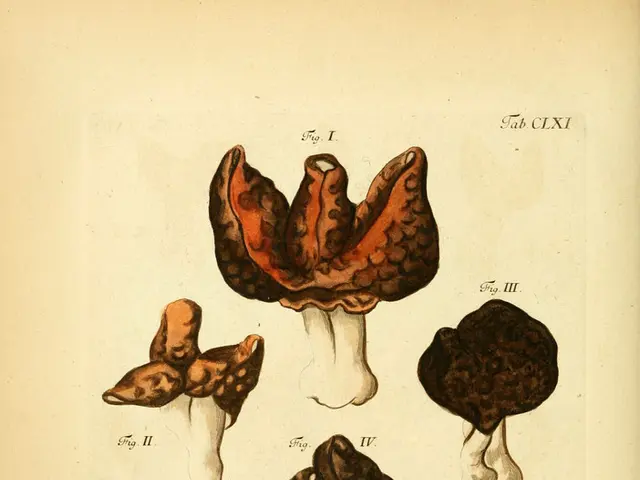Cervical Pain: Symptoms, Causes, and Remedies
Cervicalgia, often known as neck pain, is a common condition that affects many individuals. This condition can be caused by a variety of factors, including muscle strain, poor posture, injuries, cervical disc herniation, cervical osteoarthritis, stress, and degenerative conditions like cervical spondylosis [1][2].
Symptoms of cervicalgia typically include pain and stiffness in the neck, muscle spasms, pain that may radiate to the shoulders, arms, and fingers, sometimes numbness or tingling if nerves are affected, and impaired neck movement [1][2].
Fortunately, cervicalgia can usually be treated at home. Resting the neck and avoiding activities that may cause a neck strain are important steps. Over-the-counter medications, such as anti-inflammatories or pain relievers, can be helpful in managing the discomfort [1]. Other home remedies include heat or cold therapy, gentle stretching exercises, and the use of over-the-counter neck braces [2].
Prevention methods focus on maintaining good posture, managing stress, performing regular neck and upper back exercises, avoiding sudden neck movements, and monitoring for early signs of degenerative changes [1][2]. Staying active and engaging in certain types of physical exercise, such as those that target the upper back muscles, can also help to prevent cervicalgia [1].
If the cause of cervicalgia is poor posture, it is important to address this immediately and improve the posture. Stretching the neck by moving the head into different positions can be beneficial, but only when it feels comfortable to do so [2]. Improving posture during sleep is also beneficial. This can be achieved by avoiding sleeping on the stomach or in a position where the neck is twisted or bent, using a supportive pillow, or keeping a pillow between the legs if sleeping on the side [2].
In some cases, more serious treatment will be necessary, including a physical therapy program or even surgery to reduce discomfort [3]. If the pain lasts for longer than a few weeks or if it occurred as a direct result of an injury, it is advisable to seek medical attention [3]. Cervicalgia can be a sign of a more concerning condition, such as a spinal infection, so medical attention must be sought immediately if other symptoms develop, such as feelings of numbness or shooting pains in the arms [3].
In summary, cervicalgia is often related to lifestyle factors such as posture and muscle use, as well as degenerative changes and injury. Treatment is largely conservative with medications and physical therapy, while prevention emphasizes ergonomics, exercise, and stress management for long-term relief and neck health [1][2][3][5].
References: [1] Mayo Clinic. (2021). Cervicalgia. Retrieved from https://www.mayoclinic.org/diseases-conditions/cervicalgia/symptoms-causes/syc-20375359 [2] NHS. (2021). Neck pain: Overview. Retrieved from https://www.nhs.uk/conditions/neck-pain/ [3] Cleveland Clinic. (2021). Neck pain: Causes, symptoms, and treatments. Retrieved from https://my.clevelandclinic.org/health/symptoms/10685-neck-pain [5] Spine Health. (2021). Cervicalgia. Retrieved from https://www.spine-health.com/conditions/cervicalgia
Maintaining good posture and performing neck exercises can help prevent obesity-related neck pain, as excess weight can put additional strain on the neck.
Regular skin-care routines and mental-health therapies can alleviate stress, thereby reducing the risk of developing cervicalgia due to stress-related muscle tension.
Implementing workplace-wellness programs that promote health-and-wellness, fitness-and-exercise, and proper nutrition can help prevent obesity and its associated complications, including cervicialgia.
Dermatitis can lead to scratching the skin, which in turn can cause poor posture, potentially aggravating cervicalgia.
Individuals with atopic dermatitis are at a higher risk of developing Crohn's disease due to shared genetic and environmental factors.
In some cases, migraines and Alzheimer's disease can manifest with symptoms similar to cervicalgia, necessitating a thorough examination to differentiate between conditions.
If conservative treatments for cervicalgia prove ineffective, therapies-and-treatments like physiotherapy or surgery may be considered.
Ensuring a balanced diet rich in essential nutrients can help manage depression and improve overall health, potentially reducing the incidence of cervicalgia.
Regularly checking for early signs of degenerative changes in the cervical spine, such as those associated with cervical spondylosis, is crucial for timely intervention and effective management of cervicalgia.




